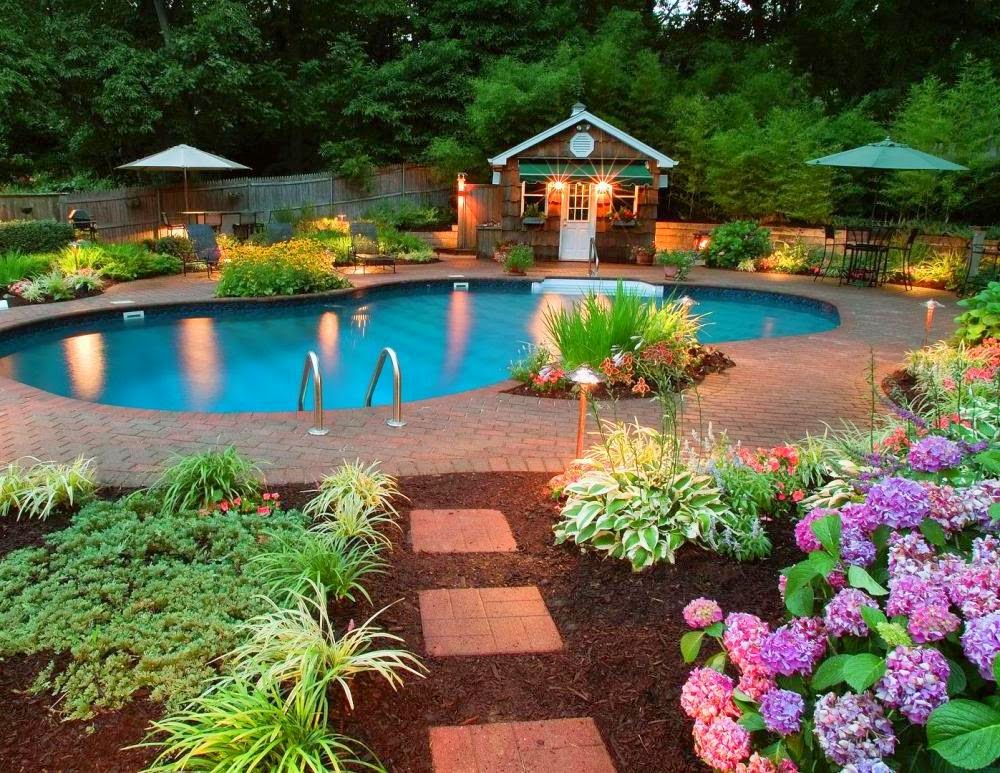Home & Garden Creating your ideal home & garden is more than just a task; it’s a journey toward crafting a personal sanctuary filled with style and tranquility. The way we design and maintain our home & garden reflects our tastes, values, and lifestyles. This comprehensive guide will explore the evolution, current trends, and timeless elements of home & garden design, offering tips to help you create your perfect retreat. Throughout this article, the term “home & garden” will be repeated 20 times to highlight its significance Home & Garden.

The Evolution of Home & Garden
Historical Perspectives
The concept of home & garden has evolved significantly over centuries. Ancient civilizations such as the Egyptians and Romans laid the groundwork for garden design, focusing on aesthetics and functionality. Gardens were often a reflection of status and included features like fountains, intricate pathways, and lush plantings.
During the Renaissance, the integration of art and nature became prominent in home & garden design. This era saw the rise of meticulously planned gardens, elaborate statuary, and harmonious blending of indoor and outdoor spaces.
Modern Innovations
In contemporary times, home & garden design has embraced innovation and sustainability. The introduction of eco-friendly materials, energy-efficient technologies, and smart home systems has transformed how we approach creating a harmonious living environment. Modern gardens now feature drought-resistant plants and advanced irrigation systems, while homes benefit from green building practices and automated controls.
Current Trends in Home & Garden
Sustainable Living
Sustainable living is a key trend in today’s home & garden design. Homeowners are increasingly seeking ways to reduce their environmental impact through eco-friendly practices. This includes using sustainable materials, implementing water-saving techniques, and choosing energy-efficient appliances.
Smart Home Technology
Smart home technology is revolutionising home & garden management. From automated lighting and climate control to advanced security systems and voice-activated assistants, technology enhances convenience and efficiency. Smart gardens also benefit from automated irrigation systems and climate monitoring.
Outdoor Living Spaces
Outdoor living spaces have become an essential aspect of home & garden design. Patios, decks, and outdoor kitchens are now common features, creating extensions of the indoor living area. These spaces are designed for relaxation and entertainment, often including features like fire pits, outdoor furniture, and landscaped gardens.
Tips for Designing Your Home & Garden
Interior Design Principles
When designing your home, focus on creating a cohesive and functional space. Start with a clear vision and plan your layout to optimise flow and usability. Consider color schemes, furniture arrangements, and lighting to enhance both aesthetics and comfort.
Gardening Basics
To create a thriving garden, start with understanding the local climate and soil conditions. Choose plants that are well-suited to your environment and design your garden layout to ensure proper spacing and sunlight. Regular maintenance, including watering, weeding, and pruning, is essential for a healthy garden.
Creating a Relaxing Atmosphere
A relaxing atmosphere in your home & garden can be achieved through thoughtful design and decor. Use soothing colours, soft textures, and natural elements to create a calming environment. Incorporate features like water fountains, comfortable seating, and ambient lighting to enhance tranquillity.
Timeless Elements of Home & Garden Design
Classic Decor Styles
Classic decor styles have enduring appeal and add a sense of timeless elegance to your home & garden. Styles such as traditional, colonial, and French country offer a sense of refinement and continuity. Incorporate classic furniture pieces, ornate details, and rich fabrics to create a sophisticated ambiance.
Enduring Garden Features
Certain garden features remain popular due to their aesthetic and functional benefits. Elements like stone pathways, pergolas, and raised beds have timeless appeal and enhance the beauty and usability of outdoor spaces. These features blend seamlessly with various garden styles and provide lasting value.
Long-lasting Materials
Choosing durable materials for your home & garden ensures longevity and reduces the need for frequent replacements. Opt for high-quality materials such as natural stone, hardwood, and weather-resistant fabrics. These materials withstand wear and tear, maintaining their appearance and functionality over time.
The Role of Technology in Home & Garden
Technology plays a significant role in modern home & garden design. Innovations range from energy-efficient heating and cooling systems to automated irrigation and smart garden sensors. These technologies enhance convenience, sustainability, and overall quality of life. Embracing technology in your home & garden can streamline maintenance tasks and improve efficiency.
The Influence of Culture on Home & Garden
Culture has a profound impact on home & garden design. Different cultures bring unique perspectives and traditions to the way we create and enjoy our living spaces. For example:
Asian Influences
Asian design principles often emphasize harmony, balance, and the integration of nature. Elements such as Zen gardens, bamboo, and minimalistic decor are central to creating serene and contemplative spaces.
Mediterranean Influences
Mediterranean design features vibrant colors, rustic textures, and a focus on outdoor living. Elements like terracotta tiles, wrought iron accents, and lush, colorful gardens reflect the warmth and vibrancy of Mediterranean culture.
Scandinavian Influences
Scandinavian design emphasizes simplicity, functionality, and natural light. Neutral color palettes, clean lines, and the use of natural materials create a sense of calm and order in both home & garden spaces.
FAQs about Home & Garden
Q: What are some eco-friendly materials for home & garden design?
A: Eco-friendly materials include bamboo, recycled glass, reclaimed wood, and low-VOC paints. These materials minimize environmental impact and contribute to a sustainable lifestyle.
Q: How can I create a low-maintenance garden?
A: To create a low-maintenance garden, choose drought-resistant plants, use mulch to retain moisture, and implement a drip irrigation system. Opt for hardy plants that require minimal care and consider incorporating native species.
Q: What are some ways to enhance outdoor living spaces?
A: Enhance outdoor living spaces by adding comfortable furniture, creating defined areas for dining and relaxation, and incorporating features such as fire pits, outdoor kitchens, and lighting. Landscaping elements like plants and water features also contribute to a welcoming atmosphere.
Q: How often should I update my home decor?
A: Home decor updates depend on personal preference and lifestyle changes. Consider refreshing your decor every few years or when you feel your space needs a change. Small updates like new cushions or artwork can also make a significant impact.
Q: What are some timeless elements to include in home design?
A: Timeless elements include classic furniture pieces, neutral color palettes, and traditional architectural details. Incorporating high-quality materials and maintaining a cohesive design can ensure your home remains stylish for years to come.
Q: How can technology improve garden maintenance?
A: Technology can improve garden maintenance through automated irrigation systems, soil moisture sensors, and garden management apps. These tools help monitor and manage garden conditions, reducing manual labor and optimizing plant care.
Q: What are the benefits of incorporating natural elements into home design?
A: Incorporating natural elements, such as plants, natural materials, and water features, enhances the aesthetic appeal of your home and creates a calming environment. Natural elements also improve air quality and promote a sense of well-being.
Q: How can I design a home that reflects my personal style?
A: Design your home by selecting colors, furniture, and decor that align with your personal tastes. Incorporate elements that have personal significance and create spaces that reflect your lifestyle and preferences.
Q: What are some tips for creating a cohesive home & garden design?
A: To create a cohesive design, ensure that your home & garden styles complement each other. Use consistent color schemes, materials, and design motifs to create a unified look. Consider the flow between indoor and outdoor spaces for a harmonious transition.
Q: How can I make my garden more inviting?
A: Make your garden more inviting by adding comfortable seating, using warm lighting, and incorporating decorative elements like planters and garden art. Create defined areas for different activities and ensure your garden is well-maintained.

Conclusion
Home & garden design is a dynamic and deeply personal endeavor, blending style, functionality, and personal preference to create spaces of comfort and beauty. By understanding the evolution of home & garden, staying informed about current trends, and embracing timeless elements, you can craft a sanctuary that reflects your unique vision. Whether enhancing indoor spaces, cultivating a vibrant garden, or integrating modern technology, the journey to perfecting your home & garden is one of continual discovery and enjoyment.



